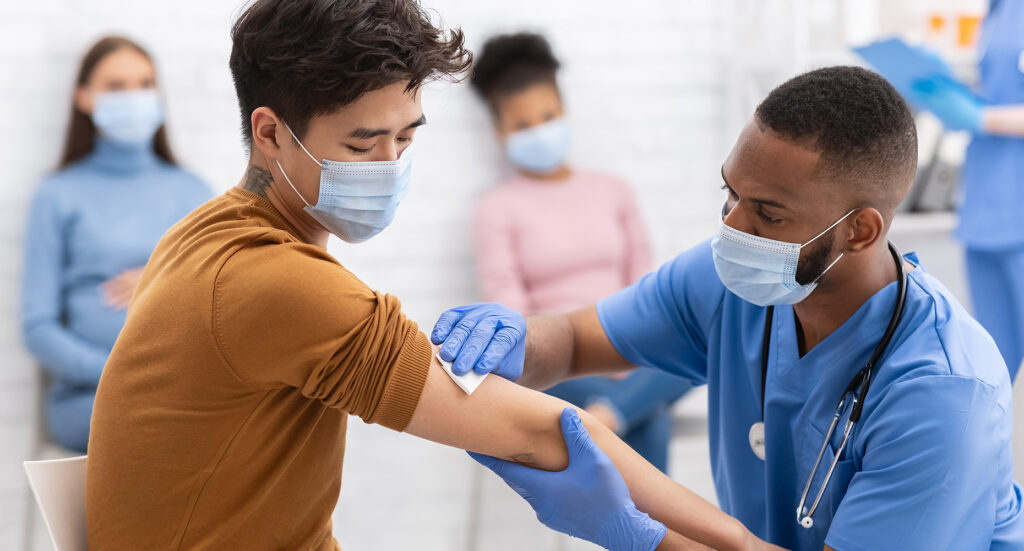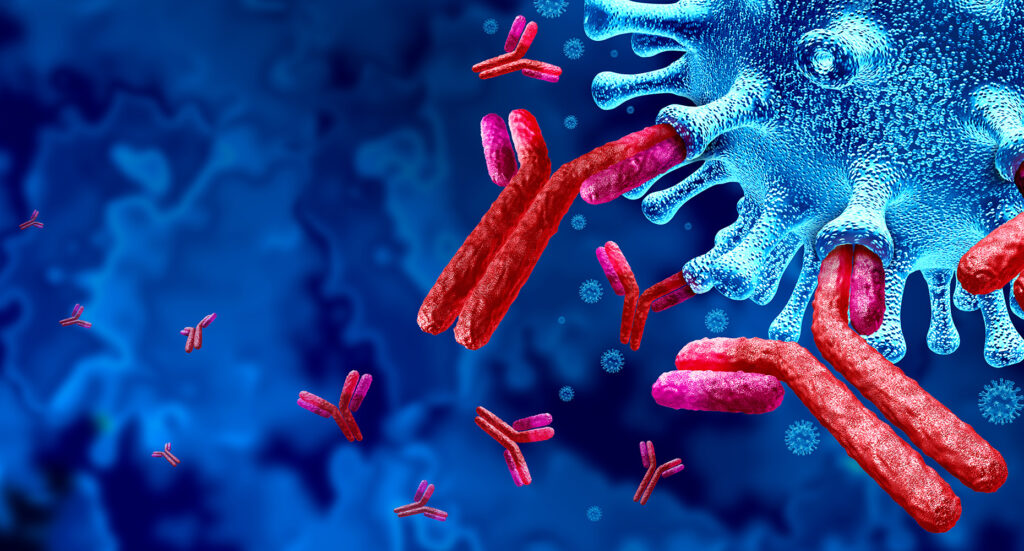Vaccines: Giving Our Health the Boost it Needs!
In 1796, Edward Jenner took a bold step that would result in the eradication of smallpox, a disease that had plagued humanity for thousands of years. After observing that dairymaids exposed to cowpox protected against the disease.1 Jenner used a method called variolation to inoculate 8-year-old James Phipps with cowpox. To transmit the cowpox to Phips, Jenner scratched fluid from a cowpox blister into Phipps’ arm Tow months later, Jenner inoculated Phipps again, but this time with smallpox. The process was a success! No disease developed.1 In the United States, vaccines have largely been a routine part of life. Vaccines are administered to children, adults, pets, farm animals, and even wild animals. From infancy, Americans typically receive a program of vaccines aimed at stamping out serious diseases within the population. Recently, vaccines have aroused interest with the introduction of new technologies and targets. To put these developments in perspective, it helps to understand the fundamentals of these crucial and captivating medical tools.


Vaccines: Giving Our Health the Boost it Needs!
August 24, 2021
.
In 1796, Edward Jenner took a bold step that would result in the eradication of smallpox, a disease that had plagued humanity for thousands of years. After observing that dairymaids exposed to cowpox protected against the disease.1
Jenner used a method called variolation to inoculate 8-year-old James Phipps with cowpox. To transmit the cowpox to Phips, Jenner scratched fluid from a cowpox blister into Phipps’ arm Tow months later, Jenner inoculated Phipps again, but this time with smallpox. The process was a success! No disease developed.1
In the United States, vaccines have largely been a routine part of life. Vaccines are administered to children, adults, pets, farm animals, and even wild animals. From infancy, Americans typically receive a program of vaccines aimed at stamping out serious diseases within the population.
Recently, vaccines have aroused interest with the introduction of new technologies and targets. To put these developments in perspective, it helps to understand the fundamentals of these crucial and captivating medical tools.

Our Inner Army
Vaccination safely trains the immune system to detect and destroy a pathogen,2 of which are organisms that cause disease (bacteria, viruses, fungi, etc.) Just as a student requires instruction, our immune systems sometimes need to be taught and drilled to fight off harmful pathogens.
The immune system is a complex network of cells, molecules, tissues, organs, and substances that work together to protect the body. Vaccines target the adaptive immune system, which employs special cells and processes to promote healing and protection. The educational video, Vaccines 101: How vaccines work, describes the process in this way:2
- The adaptive immune system recognizes “invader” antigens, which are part of all pathogens, and sets off an immune response.
- This response triggers the production of antibodies that bind to the antigen and work with other cells to destroy the pathogen. The immune system also emits killer T cells that can detect and destroy cells infected with pathogens.
- Finally, the immune system can generate memory cells to prevent future infections.
The end goal for most vaccines is to stimulate a critical level of immunity in a population by disrupting a pathogen’s chain of transmission. This is termed herd immunity. The level of vaccination needed to reach herd immunity depends on the virus and the affected population.3
Experts use sophisticated algorithms to estimate levels of vaccination needed to reach herd immunity. This equation is complicated by the need to make accurate estimates regarding the duration of contact among people and the duration of a pathogen’s infectivity.

Producing Prevention
In the United States, there are approximately 27 vaccines in use today. These encompass a variety of vaccine technologies, including:2, 3, 5
Inactivated virus:
This type of vaccine uses a killed version of the pathogen that causes a disease. The early polio vaccine, introduced in the 1950s, is an example of an inactivated virus vaccine. Most flu vaccines also use inactivated virus particles. Generally, protection from an inactivated virus is short-lived, and people may need multiple doses.
Live attenuated:
Live attenuated vaccines attain a strong and long-lived immune response by using a weakened form of the pathogen that causes a disease. Because the living pathogens are weakened, they won’t cause disease in people with healthy immune systems. Examples of these include vaccines for: MMR (mumps, measles, rubella), smallpox, chickenpox, and yellow fever.
Subunit vaccines:
These vaccines use only specific pieces of a pathogen. For this reason, they require an additional substance called an adjuvant. The adjuvant triggers inflammation that will induce an immune response. Although they can be used in a wide population, subunit vaccines do not stimulate long-term memory and may require boosters. Examples of these include: Hepatitis B, HPV, whooping cough, and pneumococcal disease.
Messenger RNA:
The SARS-CoV-2 pandemic has brought messenger RNA, also known as mRNA vaccines, to the forefront. These vaccines represent a new approach that has been in development for decades. Instead of using live-attenuated or inactivated viruses, the COVID-19 vaccine uses a structural element, mRNA, to transmit instructions to cells in the immune system. These instructions teach the cells to copy a harmless antigen that will stimulate the immune system to make the antibodies needed to fight COVID-19.

From Start to Finish
When evaluating whether a vaccine is useful, some considerations are its:3
• Ability to generate protective immunity
• Safety
• Duration of protection
• Cost
• Stability
• Method of delivery
In the United States, the Food and Drug Administration (FDA) works with vaccine developers to assess vaccines and determine when they are ready to be deployed in a general population. As with drugs, a potential vaccine goes through a multi-step process on the road to approval:6
• Phase 1 clinical trial: A small study that evaluates safety.
• Phase 2 clinical trial: A larger study that evaluates immunogenicity — the vaccine’s ability to stimulate an immune response.
• Phase 3 clinical trial: An even larger study assessing the vaccine’s efficacy to determine if it can protect against disease.
• Phase 4 post-marketing surveillance: Ongoing study that occurs after vaccine introduction. As the number of users grows, long-term monitoring can help researchers identify issues or gaps that they may need to address.
The size and timing of clinical trials vary by the vaccine. Throughout the phase 1-3 clinical trials, developers will strive to build diverse groups of study participants to understand how the vaccine behaves according to sex, age, ethnicity, etc. They may also seek out participants with specific diseases or other attributes that could affect the safety or efficacy of the vaccine.
In addition to post-launch monitoring, the Centers for Disease Control (CDC) and FDA co-manage a Vaccine Adverse Event Reporting System to compile information regarding serious side effects or events associated with a vaccine. It is uncommon that a vaccine is withdrawn from the market, but this may occur due to costs, safety concerns, or disease eradication.7
A number of governmental and medical parties participate in the process of recommending, approving, and advocating for vaccination schedules. They base their recommendation on medical practice, trends in circulating disease, and regional circumstances.8
The American Society of Microbiology ranks the development of vaccines among the greatest medical achievements. Looking toward the future, there are a number of exciting vaccine and vaccine delivery technologies on the horizon. In addition, promising advances in science could speed the development process and reduce costs.
Footnotes:
1 Riedel, Stefan. “Edward Jenner and the history of smallpox and vaccination.” Proceedings (Baylor University Medical Center) vol. 18, no. 1, Jan. 2005, pp. 21-5. doi:10.1080/08998280.2005.11928028.
2 “Vaccine 101: How Vaccination Works.” YouTube, Uploaded by Nature Video, 28 Sep. 2020, https://www.youtube.com/watch?v=4SKmAlQtAj8.
3 Racaniello, Vincent. “Virology Lectures 2021 #19: Vaccines.” YouTube, Uploaded by Vincent Racaniello, 26 Mar. 2021, https://www.youtube.com/watch?v=O55R09egthg.
4 “List of Vaccines Used in the United States.” Centers for Disease Control, 13 Apr. 2018, https://www.cdc.gov/vaccines/vpd/vaccines-list.html.
5 “Vaccine Types.” HHS.gov, U.S. Department of Health and Human Services, 29 Apr. 2021, https://www.hhs.gov/immunization/basics/types/index.html.
6 “Live at ‘Vaccines in the 21st Century,’” YouTube. Uploaded by American Society for Microbiology, 1 Jun. 2018, https://www.youtube.com/watch?v=C0p6mlqCfVA.
7 Vaccine Development: Current Status and Future Needs. American Society for Microbiology, 2005, p. 8, doi: 10.1128/AAMCol.4Mar.2005.
8 “Who and When.” HHS.gov, U.S. Department of Health and Human Services, 11 May. 2021, https://www.hhs.gov/immunization/who-and-when/index.html.
Related Articles
Introducing the HemoCue Customer Portal